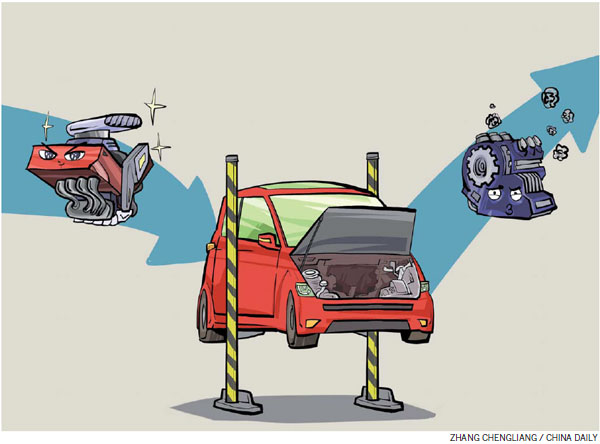
As supply-side reform gathers pace, many scholars are trying to analyze it based on Western theories brought by supply-side economists, said Zha Xianyou and Ding Shouhai from Renmin University.
What should be clarified, however, is that the structural reform put forward by President Xi Jinping is comprehensively grounded on Chinese characteristics and reality, which means going beyond the traditional demand management pattern and to seek new growth engine by managing supply side under the shadow of weak economic demand. So it’s important to remember that the theories suggested by the Western supply-side economists are geared to tackle situations that are different from what China is experiencing right now, they added.
The core logic of Western supply-side school is market liberalism, which maybe is not suitable for our situation.If we look into the history, the academic theories of supply management could be traced back to Say's law of classical economics in the early 19th century, whose key idea is that supply would naturally create demand and government should not intervene in it, because the market itself has the natural ability to solve the problem of demand and supply.
Up to now, only US, UK and Germany have achieved relatively great effect in short-term by applying reform suggested by the supply-side school. Some scholars classify the measures of supply-side reform into nine areas: tax reduction; government expenditure compression; limitation of government’s intervention in financial field (especially control the over-issuance of currency); let the exchange rate freely float as the supply-demand situation of foreign exchange market changes; privatization of state-owned enterprises (SOEs); weakening the power of labor union; deregulation of labor market; reducing government intervention; and loosening the limits of market access and entry.
Obviously, these nine areas cannot be copied in our country without any adjustment.
First, China, as a socialist state, is obliged to let public sector play a predominant role in economy, and also we cannot just sell all the State-owned shares like the UK.Instead, we should find other ways, such as mixed ownership reform, or to build modern enterprise system.
Second, though we haven’t build a comprehensive modern enterprise system like Western countries, we would still face problems if let the market function solely when distributing resources. Based on our government’s previous successful experiences, it’s considered a more scientific way to make up for the market failure when making good use of government’s power and take up with the institutional innovation.
Third, as for labor market, China has long given priority to capital over labor, and protection of labor rights and interests still need a long way to go, the strengthened regulation of labor market began in 2004, which is relatively late. So this situation is totally different from Western countries. We are not in trouble of heavy burden brought by over-protection of workers like the unemployment compensation and high-standard pension, instead further efforts are needed in labor protection.
Fourth, The problems we are facing in boosting economic growth are different from those of Western countries.
Though from the appearance most countries face the same problem of economic slowdown, but the reasons are totally different. On the problems faced by Western countries are due to stagflation, which could feed into factors like over-boosting welfare society and SOEs, so they emphasize the reform of supply side to help alleviate the situation.
While what China is struggling with now is not stagflation, instead the key points are debt and deflation. According to statistics, debt of local government reached 8.6 trillion until the end of 2014, only 54 counties had no government debt in the whole country. On the other hand, the pressure of deflation keeps tightening. Since March 2012 went for a down-trend, PPI saw negative growth for over 40 months, which lead to a structural deflation problem for China.
As we have said above, simply copying Western countries’ experience would hardly work. For example, if we use tax deduction to stimulate the input of essential productive factors, it would cause more pressure brought by deflation, and also make the over-capacity in some industries even harder to solve. The key of reform should be laid on trying to dominate the international competition rules
As China undergoes industrial structure transformation, we’re competing more with developed countries, which makes the dominance of international competition rules extremely important. For example, US is trying to take advantage of changing rules of economic agreements to favor itself and also weaken the competitiveness of China, like using the international agreements about carbon emission and intellectual property to weaken China’s cost advantage on environment industry and labor forces.
All in all, China’s supply-side reform should never simply apply measures that were used to aiming at solving Western countries’ previous dilemma.
( Wu Zheyu organized from Chongyang Institute for Financial Studies,Renmin University of China )

I’ve lived in China for quite a considerable time including my graduate school years, travelled and worked in a few cities and still choose my destination taking into consideration the density of smog or PM2.5 particulate matter in the region.